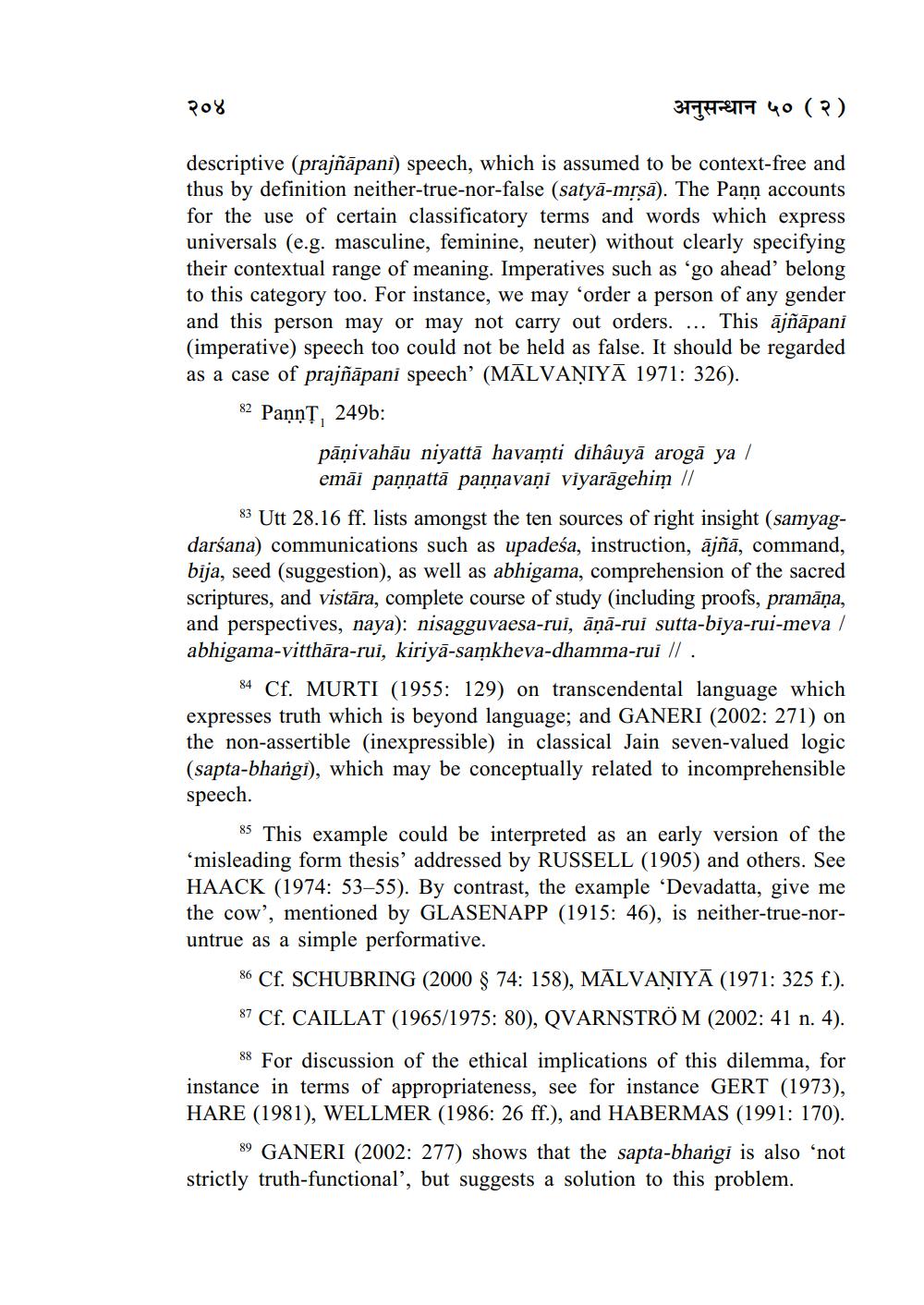________________
२०४
अनुसन्धान ५० (२)
descriptive (prajñāpani) speech, which is assumed to be context-free and thus by definition neither-true-nor-false (satya-mṛṣa). The Pann accounts for the use of certain classificatory terms and words which express universals (e.g. masculine, feminine, neuter) without clearly specifying their contextual range of meaning. Imperatives such as 'go ahead' belong to this category too. For instance, we may 'order a person of any gender and this person may or may not carry out orders.... This ajñāpani (imperative) speech too could not be held as false. It should be regarded as a case of prajñāpani speech' (MALVANIYA 1971: 326).
PannT, 249b:
82
pāņivahau niyatta havamti dihâuya aroga ya / emā paņṇattā paņṇavaņi viyaragehim //
3 Utt 28.16 ff. lists amongst the ten sources of right insight (samyagdarśana) communications such as upadeśa, instruction, ajñā, command, bija, seed (suggestion), as well as abhigama, comprehension of the sacred scriptures, and vistara, complete course of study (including proofs, pramāṇa, and perspectives, naya): nisagguvaesa-rui, aņā-rui sutta-biya-rui-meva / abhigama-vitthara-rui, kiriya-samkheva-dhamma-rul // .
4 Cf. MURTI (1955: 129) on transcendental language which expresses truth which is beyond language; and GANERI (2002: 271) on the non-assertible (inexpressible) in classical Jain seven-valued logic (sapta-bhangi), which may be conceptually related to incomprehensible speech.
5 This example could be interpreted as an early version of the 'misleading form thesis' addressed by RUSSELL (1905) and others. See HAACK (1974: 53-55). By contrast, the example 'Devadatta, give me the cow', mentioned by GLASENAPP (1915: 46), is neither-true-noruntrue as a simple performative.
86 Cf. SCHUBRING (2000 § 74: 158), MĀLVAṆIYĀ (1971: 325 f.). 87 Cf. CAILLAT (1965/1975: 80), QVARNSTRÖM (2002: 41 n. 4).
For discussion of the ethical implications of this dilemma, for instance in terms of appropriateness, see for instance GERT (1973), HARE (1981), WELLMER (1986: 26 ff.), and HABERMAS (1991: 170).
GANERI (2002: 277) shows that the sapta-bhangi is also 'not strictly truth-functional', but suggests a solution to this problem.




